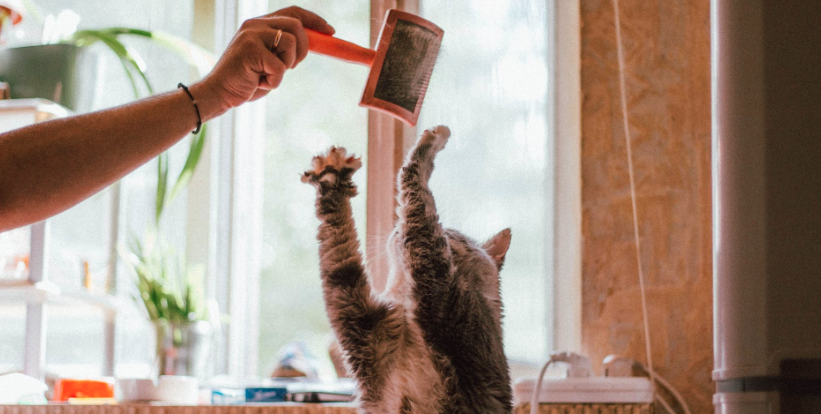
Declawing is a topic that all indoor cat owners face. No one really wants their carpets, chairs, curtains, or other furniture shredded by those sharp kitty claws. But can declawing a cat be a health concern? Let’s scratch the surface of this much discussed topic!
Why Do Cats Claw and What is Cat Declawing?
Cat clawing is natural and cats do this for a number of different reasons. This could include the following: marking territory, stretching muscles, or removing dead bits from their nails. Cat declawing is the amputation of the last bone on each toe in which the claws grow. Surgery and anesthesia is required for this procedure.
Some cat owners may choose to declaw their cat if there is concern of the cat being destructive to the owner, another animal, and household furnishings. However, it can come at a cost…a BIG cost.
Concerns With Cat Declawing
There are many cons to declawing a cat. These include, but are not limited to…
- chronic pain
- may lead to degenerative joint issues
- change in mobility
- can decrease the desire to use the litter box
- can increase biting (learn more here)
- potential infection
Alternatives to Declawing
If you don’t want to declaw your cat but still have concerns about your living room sofa, here are some safer alternatives:
- Nail Clipping– Trim your cats nails every couple of weeks. Check out this guide on how to safely trim your cat’s claws.
- Nail Caps– Purchase nail caps that can be glued to each claw so that clawing is not possible. They will eventually need to be replaced as the nail grows and falls off.
- Scratch Post Training– Make or purchase a scratching post. It can be sprayed with a pheromone solution or rubbed with cat nip to encourage scratching on the post. Consider the height of the post. It should be tall enough for the cat to stretch up. Your cat may also prefer a particular material. While training, cover furniture that was previously being clawed in plastic, aluminum foil, or double-sided tape as a deterrent.
- Furniture (Material)– Cats are less likely to claw at leather or microfiber due to the fact that the threads and more tightly woven.
Help Your Cat Keep Those Claws!
.
Disclaimer: These services are designed for educational purposes only and are not intended to serve as medical advice. The information provided on this site and in reports should not be used for diagnosing or treating any health problem or disease. It is not a substitute for professional care. If you have or suspect you may have a health problem or need medical attention, you should consult your healthcare provider. PetMedella is not responsible for the interpretation of results by any outside affiliates, practitioners or health coaches using this test.
